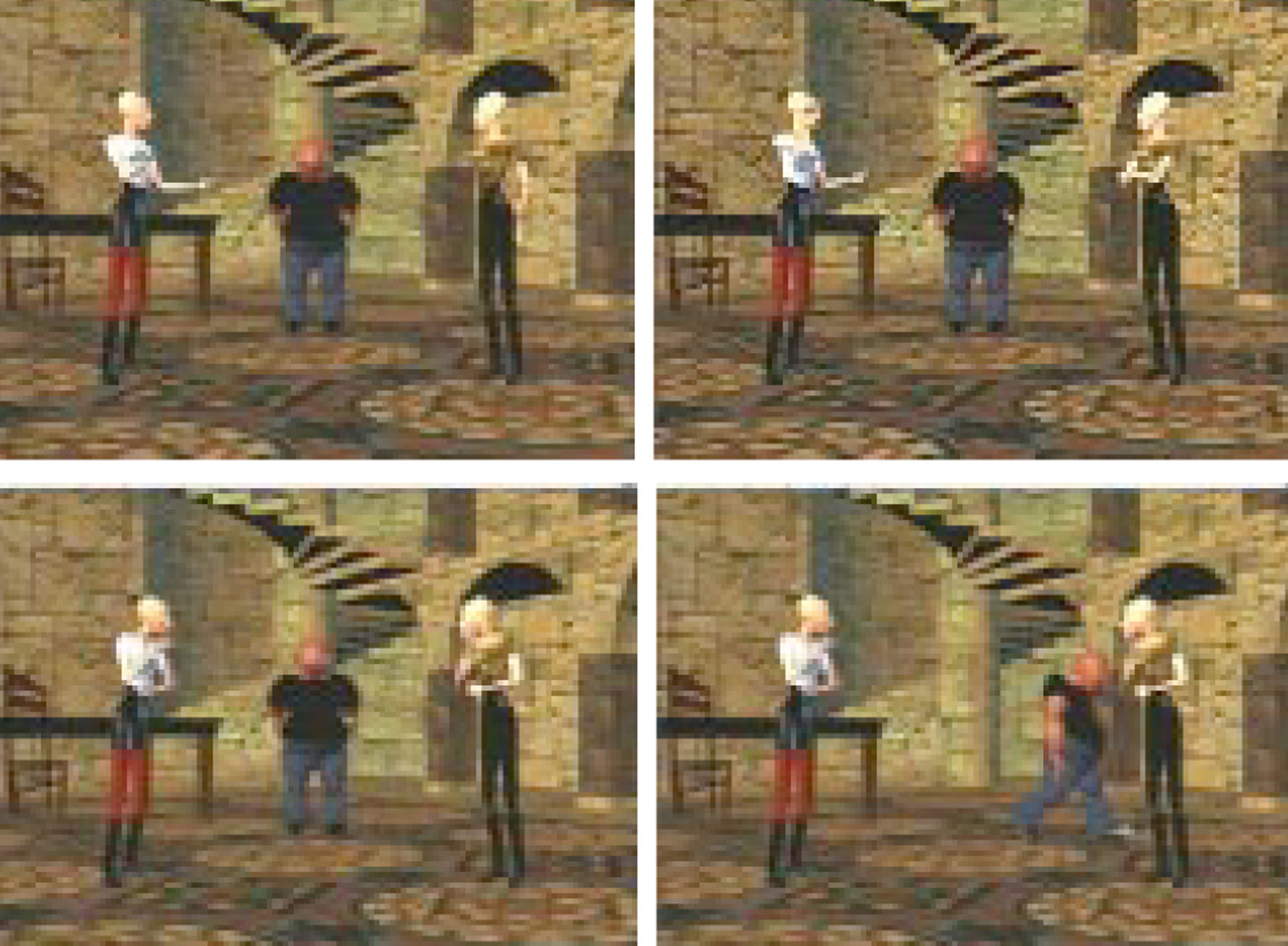“Improv: a system for scripting interactive actors in virtual worlds” by Perlin and Goldberg
Conference:
Type(s):
Title:
- Improv: a system for scripting interactive actors in virtual worlds
Presenter(s)/Author(s):
Abstract:
Improv is a system for the creation of real−time behavior−based animated actors. There have been several recent efforts to build network distributed autonomous agents. But in general these efforts do not focus on the author’s view. To create rich interactive worlds inhabited by believable animated actors, authors need the proper tools. Improv provides tools to create actors that respond to users and to each other in real−time, with personalities and moods consistent with the author’s goals and intentions. Improv consists of two subsystems. The first subsystem is an Animation Engine that uses procedural techniques to enable authors to create layered, continuous, non−repetitive motions and smooth transitions between them. The second subsystem is a Behavior Engine that enables authors to create sophisticated rules governing how actors communicate, change, and make decisions. The combined system provides an integrated set of tools for authoring the “minds” and “bodies” of interactive actors. The system uses an english−style scripting language so that creative experts who are not primarily programmers can create powerful interactive applications.
References:
- N. Badler, B. Barsky, D. Zeltzer, Making Them Move: Mechanics, Control, and Animation of Articulated Figures Morgan Kaufmann Publishers, San Mateo, CA, 1991.
- N. Badler, C. Phillips, B. Webber, Simulating Humans: Computer Graphics, Animation, and Control Oxford University Press, 1993.
- J. Bates, A. Loyall, W. Reilly, Integrating Reactivity, Goals and Emotions in a Broad Agent, Proceedings of the 14th Annual Conference of the Cognitive Science Society, Indiana, July 1992.
- B. Blumberg, T. Galyean, Multi-Level Direction of Autonomous Creatures for Real-Time Virtual Environments Computer Graphics (SIGGRAPH ’95 Proceedings), 30(3):47–54, 1995.
- A. Bruderlin, L. Williams, Motion Signal Processing, Computer Graphics (SIGGRAPH ’95 Proceedings), 30(3) :97– 104, 1995.
- R. Brooks. A Robust Layered Control for a Mobile Robot, /EEE Journal of Robotics and Automation, 2(1):14–23, 1986.
- J. Chadwick, D. Haumann, R. Parent, Layered construction for deformable animated characters. Computer Graphics ( SIGGRAPH ’89 Proceedings), 23(3):243–252, 1989.
- D. Ebert and et. al., Texturing and Modeling, A Procedural Approach Academic Press, London, 1994.
- M. Girard, A. Maciejewski, Computational modeling for the computer animation of legged figures. Computer Graphics (SIGGRAPH ’85 Proceedings), 20(3):263–270, 1985.
- J. Hodgins, W. Wooten, D. Brogan, J O’Brien, Animating Human Athletics, Computer Graphics (SIGGRAPH ’95 Proceedings), 30(3):71–78, 1995.
- M. Johnson, WavesWorld: PhD Thesis, A Testbed for Three Dimensional Semi-Autonomous Animated Characters, MIT, 1994.
- M. Karaul, personal communication
- P. Maes, T. Darrell and B. Blumberg, The Alive System: Full Body Interaction with Autonomous Agents in Computer Animation’95 Conference, Switzerland, April 1995 .IEEE Press, pages 11-18.
- M. Minsky, Society of Mind, MIT press, 1986.
- C. Morawetz, T. Calvert, Goal-directed human animation of multiple movements. Proc. Graphics Interface}, pages 60–67, 1990.
- K. Perlin, An image synthesizer. Computer Graphics (SIGGRAPH ’85 Proceedings)}, 19(3):287–293, 1985.
- K. Perlin, Danse interactif. SIGGRAPH ’94 Electronic Theatre, Orlando.
- K. Perlin, Real Time Responsive Animation with Personality, IEEE Transactions on Visualization and Computer Graphics, 1(1), 1995.
- K. Perlin, A. Goldberg, The Improv System Technical Report NYU Department of Computer Science, 1996. (online at http://www.mrl.nyu.edu/improv)
- K. Sims, Evolving virtual creatures. Computer Graphics (SIGGRAPH ’94 Proceedings) }, 28(3):15–22, 1994.
- N. Stephenson, Snow Crash Bantam Doubleday, New York, 1992.
- S. Strassman, Desktop Theater: Automatic Generation of Expresssive Animation, PhD thesis, MIT Media Lab, June 1991 (online at http://www.method.com/straz/straz-phd.pdf)
- D. Terzopoulos, X. Tu, and R. Grzesczuk Artificial Fishes: Autonomous Locomotion, Perception, Behavior, and Learning in a Simulated Physical World, Artificial Life, 1(4):327-351, 1994.
- A. Witkin, Z. Popovic, Motion Warping Computer Graphics (SIGGRAPH ’95 Proceedings), 30(3):105-108, 1995.




